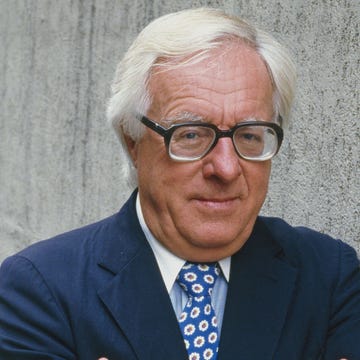It is hard to do justice to Rabih Alameddine’s seventh novel, The True True Story of Raja the Gullible (and His Mother), without giving too much away. The book functions as a set of nesting dolls, offering stories embedded in stories, a series of overlapping detours and evasions that ultimately coalesce as a vivid and coherent whole. In that sense, the novel is as much about the storyteller, or the process of storytelling, as it is about the substance of its narrative. Imagine a 21st-century Scheherazade—in the form of a 63-year-old gay Beiruti teacher named Raja—spinning stories to keep himself and his 85-year-old mother alive in a dangerous and disruptive world.
To facilitate such a mix, Alameddine constructs The True True Story of Raja the Gullible like an accordion, bracketing it with two short chapters set in 2023 and using the space between them to take his narrator back and forth in time. One story, or memory, leads to another as the novel telescopes and folds in on itself. The result is a book of willful delirium, one that deconstructs its own narrative. Alameddine has long worked with innovative structures; his 2001 novel, I, the Divine, unfolds as a series of first chapters. Twenty-four years later, the shape of this new work of fiction highlights both the insufficiency of memory, of story, and their utter necessity.
The trigger for Raja’s sinuous digressions is an email invitation to spend three months in Virginia on a writing fellowship, an offer including travel and lodging, a $9,000 stipend, and all expenses paid. After a number of years spent sharing a tiny Beirut apartment with his mother and two cats, Manet and Monet, he’s all in. There’s only one problem, or “hesitation,” as Alameddine puts it: The character is not an author. “I wasn’t working on anything,” Raja admits, “hadn’t worked on anything for more than twenty-five years, and had no intention of working on anything in the future either. I had written a book, you see, twenty-five years earlier. But I’m not a writer, not really. I wrote a book, that was it. It was an accident.”
All writers and writing, of course, might be said to be accidental; just because you’ve done it once, or even more than once, there’s no guarantee you’ll do it another time. Things change, and then they change again—an idea that sits at the heart of this novel in more ways than one. No sooner does the residency come up than it appears to be forgotten or, more accurately, to be set aside. “You thought I’d forgotten about the email that started this tale, didn’t you?” Raja asks about a third of the way through the narrative. “I assume you probably have. A tale has many tails, and many heads, particularly if it’s true. Like life, it is a river with many branches, rivulets, creeks, and distributaries. I’ll get to everything, I swear.”
Then, he promptly drops the subject once more.
The key word here is “true”; there’s a reason it appears twice in the book’s title, after all. That may seem ironic when it comes to a novel, which is nothing if not an invention. Alameddine, however, sets his book within a timeline of recognizable realities, encompassing the Lebanese Civil War, the country’s 2019 liquidity crisis (in which the economy essentially collapsed), the COVID-19 pandemic, and the 2020 port explosion in Beirut, which killed more than 200 and injured thousands more. For Raja, each becomes a crucible, both in his life and on more collective terms. “If I told you things happened so fast neither my mother nor I had any idea of what we were doing, and neither had any recollection of what we did during that minuscule segment of time when our world and the city turned upside down,” the character insists about the last of these events, “I would be telling you the truth. If I told you time stood still, that we knew what was going to happen one millisecond before it did and reacted with the deftness and precision of combat veterans, I would be telling you the truth.”
What Alameddine is suggesting is that truth is subjective, which means writers are liars if anything at all. While a narrative may appear to move toward order, this is a frame we impose afterward. In the moment, there is just chaos. In the moment, there is only circumstance. That’s a point Alameddine makes explicit throughout The True True Story of Raja the Gullible, as he constantly feints and weaves to undermine his narrator’s authority. “I begin this story with the lie,” Raja tells us, referring to his fellowship invitation; a few pages later, he acknowledges he also hasn’t been “completely candid” in discussing his job history. “Okay, so that wasn’t true either,” he adds about his bank balance, which, even as he equivocates, has already disappeared. The effect is to evoke a world in which almost nothing can be trusted, except (and most fundamentally) his mother’s love.
This is the reason for the novel’s elliptical and elastic structure, which becomes fully apparent only after we have read through to the end. The result is a tour de force of indirection, anchored by a long section—almost a freestanding novella—about Raja’s experience as a teenager at the outset of the civil war. To reveal any more about what the character undergoes would be to give away too much; in any case, I’m more interested in the how of the novel (which is to say the way it works) than I am in the what.
Because here’s the thing: Alameddine is playing the long game in The True True Story of Raja the Gullible, trusting that we’ll stay with him, that the skill and urgency of his storytelling will keep us rooted, let him pursue his own pace. This, too, is the way of life, a series of moments followed by other moments, the connections only apparent through the passage of time. Where else does such a passage take place if not within us, where we are always every age we have ever been at once? It’s a tightrope walk, a magic trick, which is also what a novel is. A tale with many tails and heads that is, in this case, magnificently articulated through the instrument of Raja’s voice.•













